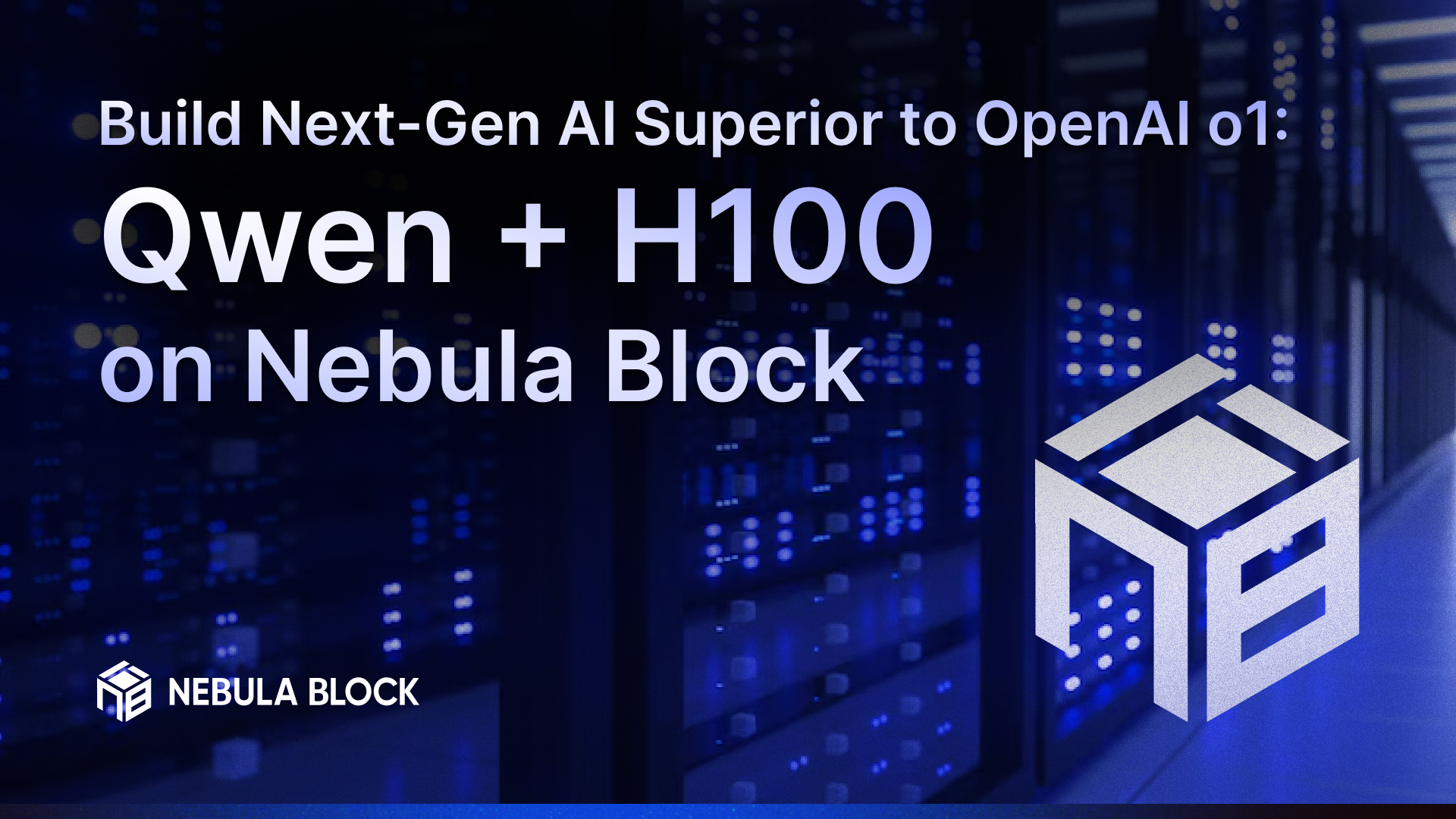Build Next-Gen AI Superior to OpenAI o1 : Qwen + H100 on Nebula Block

The recent release of the S1–32B model by Stanford researchers marks a seismic shift in AI development. Trained on just 1,000 high-quality reasoning samples and fine-tuned for only 26 minutes using 16×H100 GPUs, S1–32B outperformed OpenAI’s o1-preview by up to 27% on math and reasoning benchmarks like MATH500 and AIME24.
This isn’t just a performance milestone — it’s a paradigm shift.
Two forces are reshaping the future of LLMs:
- Efficiency Over Scale: Techniques like Budget Forcing activate deep reasoning without massive data overhead.
- Cost Compression: High-end hardware (H100, FP8, NVLink) reduces fine-tuning time to mere minutes — cutting model iteration costs to pocket change.
Nebula Block: Your S1-Ready Playground
Nebula Block brings this revolution to your fingertips — combining open-weight Qwen models with H100 compute in a seamless, cost-effective platform.
Foundation Models: Qwen, Fine-Tuned for Results
Qwen-QwQ-32B — $1.08 per million tokens
- A 32B reasoning model rivaling DeepSeek-R1. Supports chain-of-thought, programmatic tasks, and rapid adaptation.
Qwen2.5-Coder-32B — $0.15 per million tokens
- Specialized for code, math, and logic — ideal for vertical applications in science, finance, and education.

Elite Compute: H100, Elastic and Affordable
Single H100 (80G SXM5) — $2.64/hr
- S1 fine-tuning costs ≈ $1.14 total.
8×H100 NVLink Pod — $16.356/hr
- 900GB/s interconnect, optimized for 100B+ model training, 3× throughput vs A100.

Nebula Block vs Traditional Clouds: The Cost Showdown

Reproducing S1: The Developer’s Guide
To replicate S1-class performance on Nebula Block, developers must complete the following steps independently:
1. Code & Technique Porting
- Training: Follow Section D.1 of the paper to configure PyTorch FSDP (reference GitHub repo).
- Inference: Implement Budget Forcing decoding (Section 3.1) — requires custom token generation logic.
2. Data Preparation
- s1K Dataset: Download from the GitHub repo and convert to HuggingFace format (per Appendix C).
- Custom Tasks: Clean and align your own data for broader use cases.
3. Training & Deployment
- Environment Setup: Deploy code on Nebula Block H100 instances, manage dependencies manually.
- Monitoring: Use tools like TensorBoard or Weights & Biases for training observability (basic monitoring included).
Conclusion
With Nebula Block, developers are no longer at the mercy of closed APIs or bloated cloud bills. Our open models + elastic compute combo lets you build, test, and deploy high-performance LLMs faster and cheaper than ever before.
From fine-tuning to inference, the entire stack is yours.
Ready to Train Your Own S1-Level Model?
Get started with free trial credits and unlock your next breakthrough today:
👉 https://www.nebulablock.com/register?referral=4a66c0ca&ref=blog.nebulablock.com
Stay Connected
💻 Website: nebulablock.com
📖 Docs: docs.nebulablock.com
🐦 Twitter: @nebulablockdata
🐙 GitHub: Nebula-Block-Data
🎮 Discord: Join our Discord
✍️ Blog: Read our Blog
📚 Medium: Follow on Medium
🔗 LinkedIn: Connect on LinkedIn
▶️ YouTube: Subscribe on YouTube